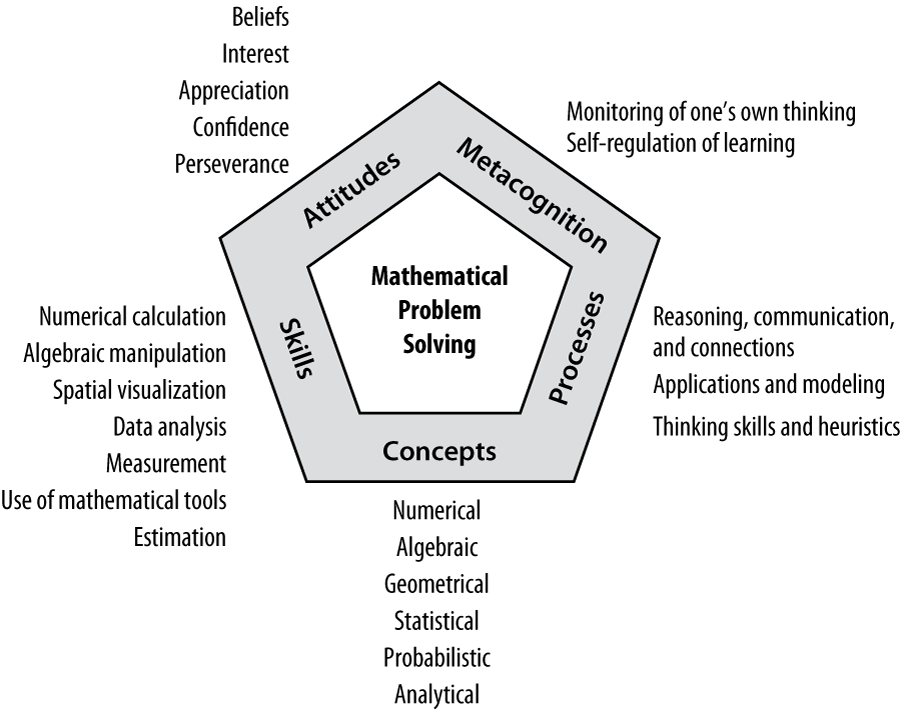The Mathematics Curriculum in Primary and Lower Secondary Grades
The Singapore Mathematics Curriculum Framework (Exhibit 2) is used at all the grade levels from primary to preuniversity education, and emphasizes the development of students’ mathematical abilities, with a focus on problem solving.19 Five interrelated components support the development of problem solving abilities: concepts, skills, processes, metacognition, and attitudes. The framework provides directions for the teaching, learning, and assessment of mathematics.
Exhibit 2: Singapore Mathematics Curriculum Framework20

© Ministry of Education, Singapore (Reproduced with permission by the Ministry of Education, Singapore)
The Singapore mathematics curriculum comprises a set of syllabi spanning 12 years, from primary to preuniversity education. As mathematics is a hierarchical subject, higher concepts and skills are built upon foundational ones and must be learned in sequence. The curriculum is designed in a spiral manner where concepts and skills in each content strand (e.g., Numbers and Algebra, Geometry and Measurement) are revisited and built upon at each level to achieve greater depth and understanding. Exhibit 3 presents a summary of the concepts and skills to be learned by the end of Grade 8 (Secondary 2). Teachers help their students learn these concepts and skills by adopting age- and grade-appropriate pedagogical approaches. Central to these pedagogical approaches at the primary and lower secondary levels is the Concrete-Pictorial-Abstract (C-P-A) approach, whereby teachers lead students through activities that help build an understanding of abstract mathematical concepts from everyday experiences and meaningful contexts, using concrete and pictorial representations.
Exhibit 3: Mathematics Concepts and Skills
| Primary Mathematics Grades 1–6 | Lower Secondary Mathematics Grades 7–8 |
| Numbers and Algebra | |
|
|
| Geometry and Measurement | |
|
|
| Statistics and Probability | |
|
|
